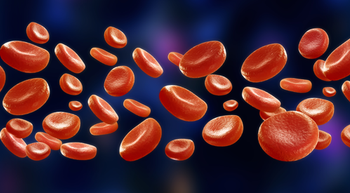
FDA Approves TAS-102 for Metastatic Gastric or Gastroesophageal Junction Cancer
The Food and Drug Administration approved TAS-102 (Lonsurf; trifluridine/tipiracil) for the treatment of patients with pretreated metastatic gastric adenocarcinoma or gastroesophageal junction cancer.
The FDA approved TAS-102 (Lonsurf; trifluridine/tipiracil) for the treatment of patients with metastatic gastric adenocarcinoma — including gastroesophageal junction cancer (GEJ) – who were previously treated with 2 or more lines of therapy.
The approval is based off the phase III TAGS trial (
“Effective treatments for patients with heavily pretreated advanced gastric and GEJ cancer are limited,” Martin Birkhofer, MD, senior vice president and Chief Medical Officer, Taiho Oncology, Inc., said in a press release. “By improving survival, Lonsurf may provide a significant impact on the lives of these patients.”
TAGS was a double-blind, global study that included 507 with histologically confirmed, nonresectable metastatic gastric/GEJ cancer and an ECOG performance status of 0 or 1 — meaning that they were either fully active, or had limited restrictions on their day-to-day activities – and received 2 or more prior lines of chemotherapy. Patients were randomized 2:1 to either 35 mg2 of TAS-102 twice a day on days 1 through 5 and 8 through 12 of each 28-day cycle, or placebo plus best supportive care. They were treated until progression, intolerability, or patient withdrawal.
Median overall survival (OS_, the primary endpoint, was 5.7 months for patients assigned to TAS-102 compared with 3.6 months for patients randomized to placebo. The 2.1-month improvement in median OS with TAS-102 over placebo translated into a hazard ratio for death of 0.69 (P = .0003). The 12-month OS rate for the TAS-102 group was 21% versus 13% for the placebo group.
Median progression-free survival (PFS), a secondary endpoint, was also significantly improved with TAS-102 compared with placebo (2.0 vs 1.8 months; HR, 0.57; P < .0001). The 6-month PFS rates were 15% and 6%, respectively. The PFS advantage for TAS-102 was maintained when assessed by subgroups based on age, region, ethnicity, ECOG performance status, primary site, number of metastatic sites, and prior treatment with ramucirumab, among others.
The objective response rate with TAS-102 was 4% compared with 2% for placebo. In the active treatment group, there was 1 complete response (CR), 12 partial responses (PRs), and 115 patients with stable disease (SD), for a disease control rate of 44%. The disease control rate in the placebo group was 14% (0 CR, 3 PRs, 18 patients with SD). The absolute difference between groups in the disease control rate was 30% (P <.0001).
Time to deterioration of ECOG performance status to 2, a secondary endpoint, was longer in the TAS-102 group compared with the placebo group (median, 4.3 vs 2.3 months; HR, 0.69; P= .0005).
Severe (grade 3 or higher) adverse events (AEs) occurred in 80% of patients on TAS-102, and 58% of patients on placebo. When it came to all-grade AEs, TAS-102 also had a higher incidence than placebo — 81% versus 57%. There was 1 treatment-related death in each group, and grade 3 or higher febrile neutropenia of any cause was reported in 6 (2%) of patients on TAS-102.
The most common AEs that led to dose modification were neutropenia and/or decreased neutrophil count (37%), anemia and/or decreased hemoglobin levels (9%), and leukopenia and/or decreased white blood cell count (6%).
Newsletter
Knowledge is power. Don’t miss the most recent breakthroughs in cancer care.

















































































